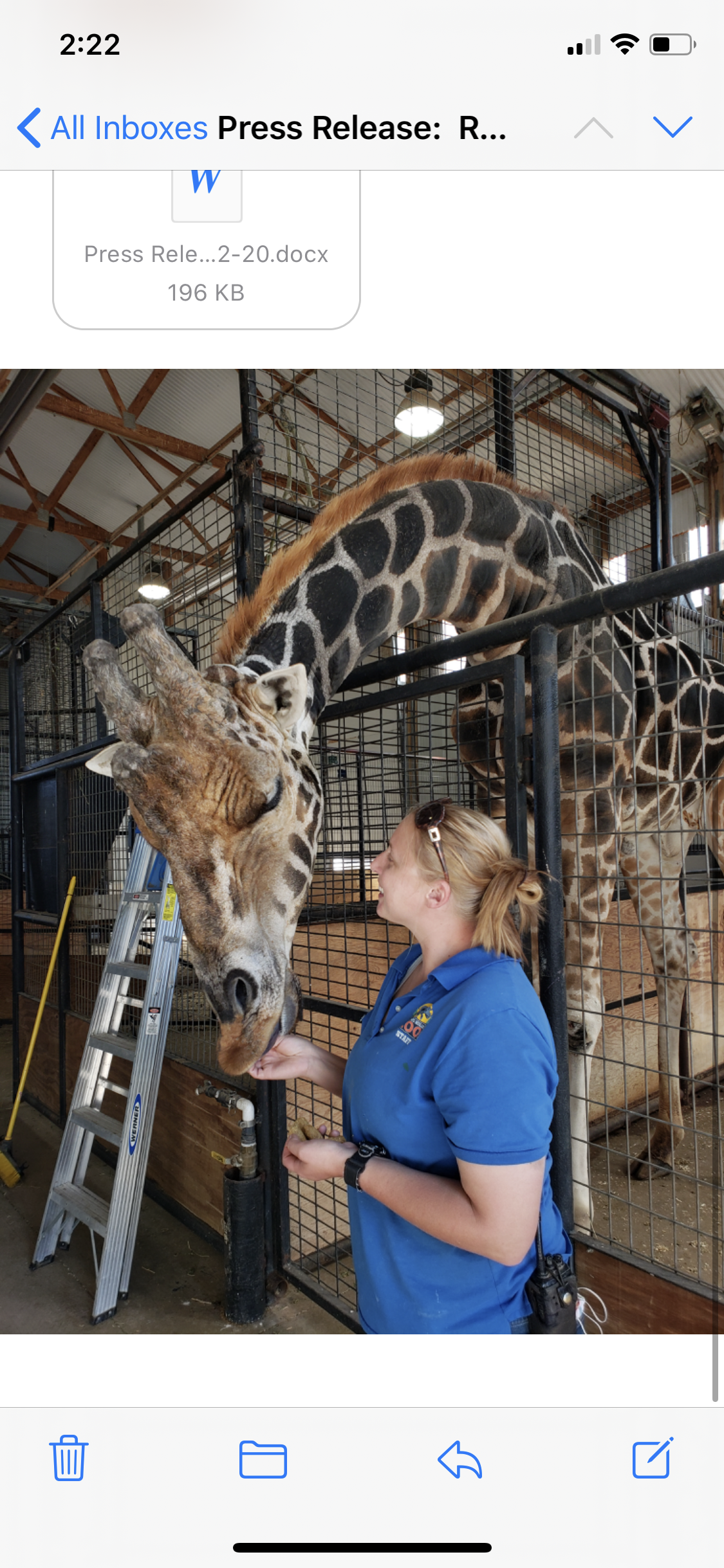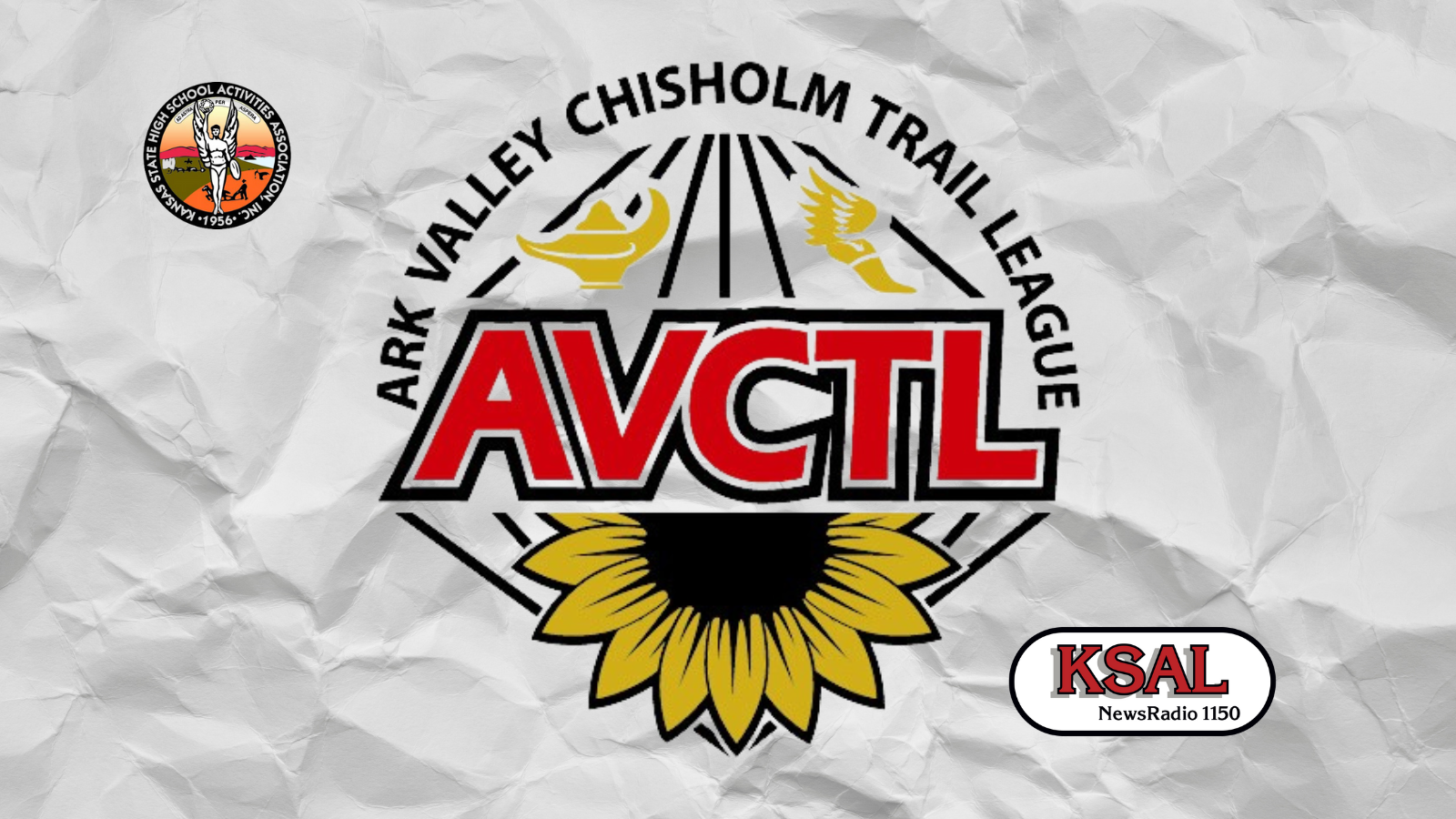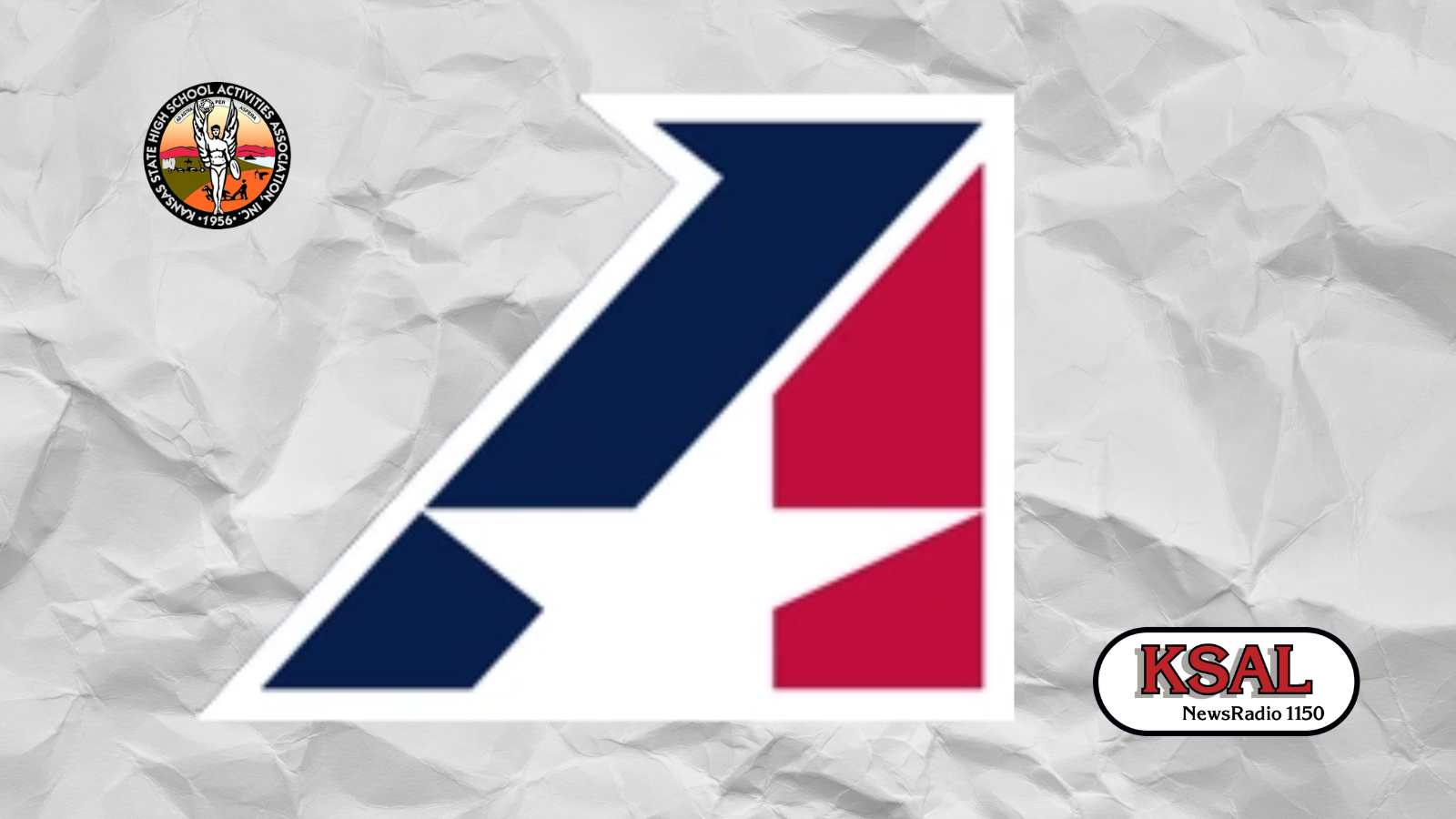Rolling Hills Zoo is grieving the loss of one of the more popular members of its animal family. Bt, their male giraffe and a beloved family member, otherwise known as Btuanya, has passed away.
According to the zoo, at 18 years old Bt was being treated for severe tendinopathy, which can happen to all giraffes, and it was progressively getting worse, reducing his mobility and putting him at risk of serious injury during a fall.
While not entered into lightly, due to his rapidly declining health and advanced age, it was decided that humanely euthanizing him was the kindest option. Bt’s bodyhas been transported to K-State for a necropsy.
Born at the Utah Hogle Zoo on September 25, 2002, Bt came to Rolling Hills Zoo in May 2004 at the age of 1 ½ years old to be part of a bachelor group. Joining him were males, Jumbe and Peperuka. Jumbe was one year old when he arrived on March 11, 2004 from Dickerson Park Zoo, TN, where he was born. Peperuka arrived onJune 3, 2005 from San Diego Wild Animal Park where he was born. He was almost 3 years old upon his arrival. Peperuka and Jumbeboth left RHZ in 2011, with Jumbe moving to the Knoxville Zoo and Peperuka to Dickerson Park Zoo, MO.
“I remember Bt being so small when he arrived, all three of those males were actually,” recalled Vickie Musselman, RHZ Registrar. “Bt and Jumbe used to pick at each other constantly when out in the yard. He had grown to be such an amazing looking male who has also been very gentle with our two females.”
As the last of the three males at Rolling Hills Zoo, Bt welcomed Zuri and Billie, two females who came to RHZ on a breeding recommendation by the SSP (Species Survival Plan) a collaborative effort among Association of Zoos & Aquariums (AZA) – of which RHZ is an accredited institution.
Bt only sired one offspring, JoJo, a male born in 2016, whose mother is Zuri. “When Jojo was born, all he wanted was to go see his dad, Bt, who was housed down at the end of the building. He was so insistent, so we let him go over there. He ran over and they touched noses. It was one of the most precious memories I will remember,” reminisced Devney Bowen, RHZ Head Keeper. “He was a great dad and he played with Jojo by teaching him ‘necking’.”
“I called him “TT” along with several other colleagues, as a special nickname when you weren’t referring to him as Bubba or handsome boy,” shared Bowen fondly. “Bt always took his time, he could not be rushed, and would not be. He was a “stop and smell the roses” kind of giraffe. He was very decisive and would give you a firm head throw to tell you “no” when he did not want to do something. He loved biscuits, lettuce, and carrots more than anything. Getting a nose nuzzle from him when feeding him his breakfast or dinner will always be my favorite memory. Bt was a favorite for so many at the zoo over the years, he will be missed by all that had the privilege to work with him.”
Bt’s Hoof Care
Bt’s severe tendinopathy of the forelimbs was diagnosed via x-rays. This condition happened over time and can be associated with hoof overgrowth. Thankfully he had not developed bone fractures along with the tendinopathy.
The RHZ staff had worked very hard over the last few years to do hoof trimming using specialized training techniques. By doing so, ithelped avoid having to anesthetize Bt, something that carries a high risk of mortality in giraffes. He also received anti-inflammatory/pain medications, physical therapy, laser therapy, ice therapy, and supportive wraps.
While not all giraffe hooves can be trimmed via training and either go uncorrected or have to be anesthetized for trimming, theunderstanding of giraffe hoof growth and trimming has increased greatly over the last few years within the AZA zoo community. Zoos now have the techniques to intervene sooner and employ preventive maintenance for future generations of giraffes. Keeperscan also start training them for voluntary hoof care at a young age.
“Bt has taught all his caregivers about patience and helped hone their training techniques over the years,” shared Brenda Gunder, RHZ Curator, “and I will miss him.”
Starting in 2012, initial desensitization to touching Bt’s hooves began as the keepers pushed a wood block towards his feet and touched it as a way to associate the sensation with the word “foot”. Then they added “toe doors” to his enclosure so they could access his hooves in protected contact. By 2013 the keepers were using a dremmel to trim some overgrowth. That same year they started experimenting with using the firehose barrier, which is now one of the preferred ways to access the feet for facilities, and by 2015 keepers were kneeling at his feet to work toward accessing the bottom. As Bt’s comfort level and trust grew he could help in his voluntary hoof care by lifting his leg as the keepers guided it onto a wooden block, much like a farrier does with a horse. In the last twoyears RHZ has maintained training and trimming 3-5 times a week on both his front feet and had started trimming the tips of his back feet. Bt was also desensitized to a leg wrap and a brace to help stabilize his joint.
“My greatest memories are the ones where Sara, I and Bt would train together,” recalled Brooke Rose, RHZ Hoof Stock Keeper. “We all worked hard trying to shape these behaviors, and Bt was always ready to train and always willing to please. He always looked just as pleased and happy to accomplish a behavior as we were. When we were working on training with his back feet and we had finally got Bt to place his foot on the mat, I gave him what we call a ‘jackpot’, a whole bunch of biscuits at one time. He then proceeded to pick his foot up and down on the mat repeatedly with his head held high. It was like he was saying, ‘oh look at me! Look at a how handsome and smart I am!’ He could always be counted on to make me smile and laugh. His goofy face, begging for more biscuits. Oh how I just loved him.”
Other animals can develop hoof overgrowth, but domesticated animals are much easier to trim. Horse hooves are trimmed by farriers all the time and there are specialized chute systems to restrain cattle for hoof care. Hooves on sheep and goats can be easily maintained. Even RHZ’s other exotic hoof stock can be anesthetized for hoof care and carry a much lower risk of death under anesthesia.
“Bt has brightened my day, every day since I started. From kisses at feeding and the goofy expressions he would make, usually at the girls,” shared Laura Mason, RHZ Hoof Stock Keeper. “He was a gentle, curious individual. He will be missed by all who knew him and especially those who worked with him. He made an impression on everyone he met. I am thankful for the year I had with him, though short, he taught me so much.”


